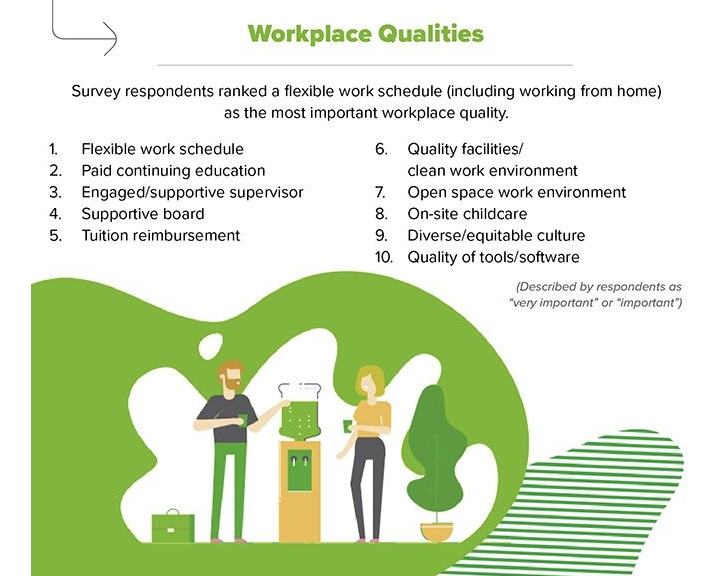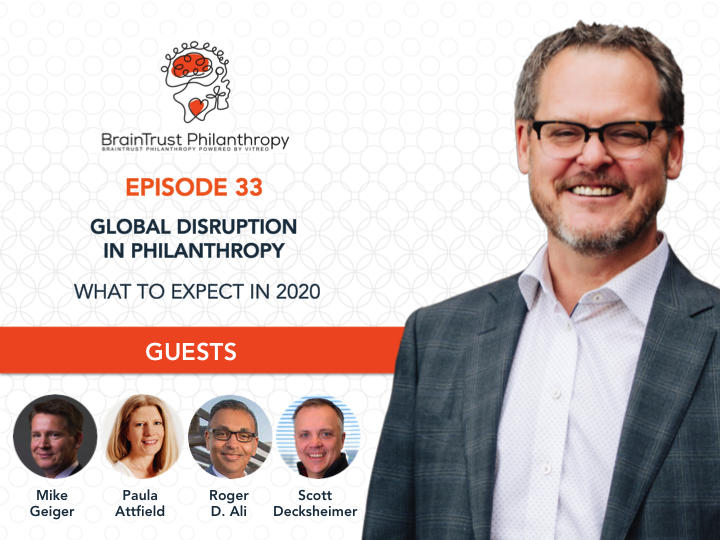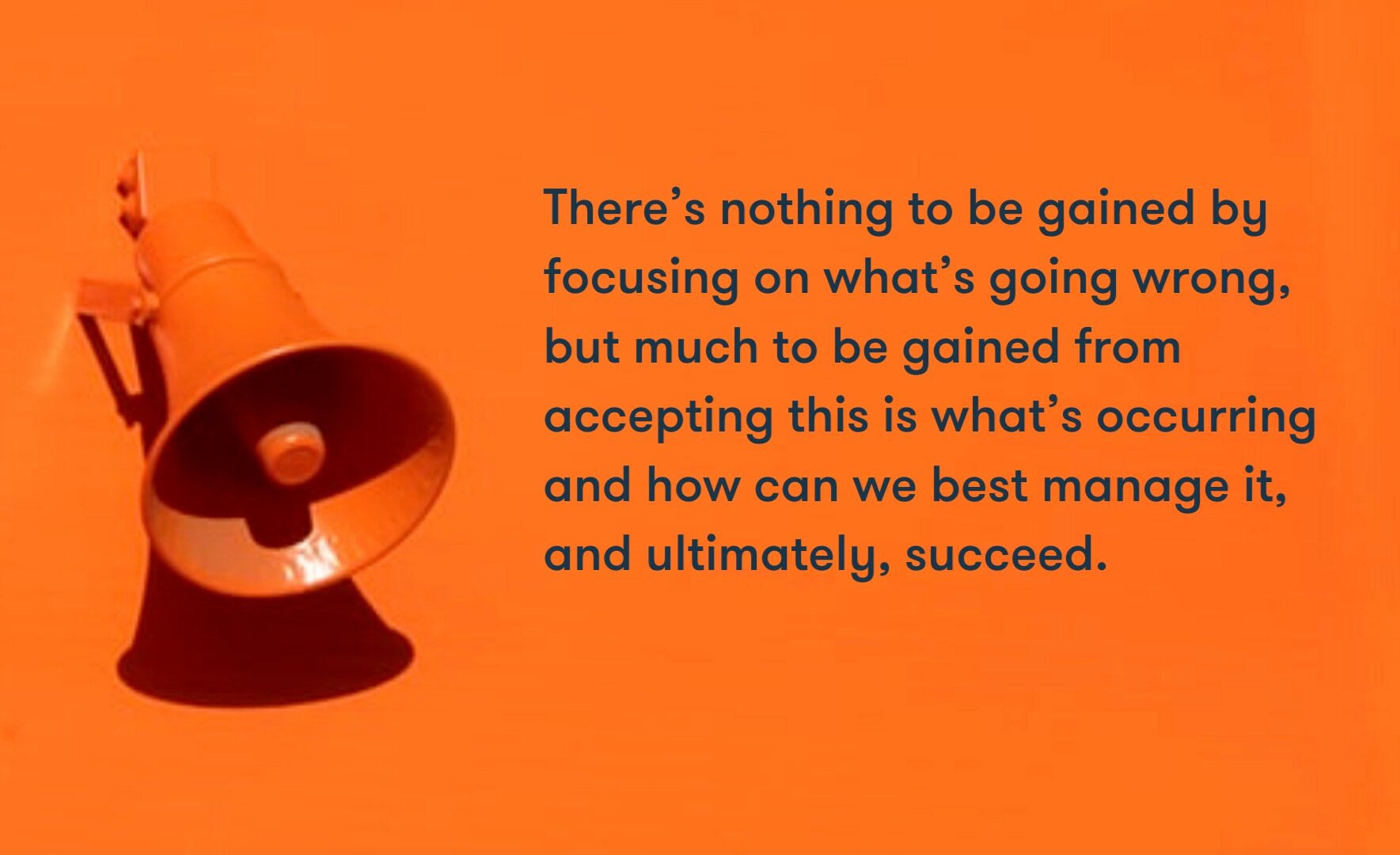BUCKLE UP! IT’S GOING TO BE ANOTHER ROUGH RIDE
BUCKLE UP! IT’S GOING TO BE ANOTHER ROUGH RIDE
2020 Promises Another Year Of Turbulence And Change In The Charitable Sector
Andrea McManus, ViTreo Group Inc
January 7th 2020
Photo credit: Unsplash
Welcome back to The Provocateur and Happy New Year! Thank you for visiting or continuing to join us as we continue to tackle the tough topics in the charitable world. Watch for an upcoming blog series on the diversity gap, racism and bias in the nonprofit world as well as mental health issues in the charitable workforce. After reading each blog, I invite you to re-think what you may have always believed about the nonprofit world and to re-consider ways in which you’ve undertaken fundraising work; I also welcome your comments and hope you will share with others what you’ve read.
As we bid au revoir to 2019 and enter a new decade, global disruption is still omnipresent. We have a just-impeached president south of the border and here in Canada, where I reside, a country struggling mightily with national unity. And that’s just in North America. Some degree of turmoil, unrest and chaos, unfortunately, seems to be the current state of being in most countries on the planet. All of which continues to impact our work.
However, I’m an eternal optimist. In spite of the ubiquitous problems we all hear about every day, I take the view that there are always opportunities we can carve out to the benefit of our work and our sector.
Below are a number of the trends we’ve been hearing about at ViTreo; some are the result of global disruption and political events while others are occurring because of shifting demographic patterns. One of the most significant events to impact our sector, and which must be considered in the work we do, is the fact that millennials are now the largest adult generation in both Canada and the U.S. (Pew Research Centre, Millennials Projected To Overtake Baby Boomers As America’s Largest Generation, Richard Fry, March 01 2018) (Royal Bank of Canada, RBC Economics Research: Millennials, Laura Cooper, October 2016).
They are not our only audience by any means, but as fundraisers and nonprofit organizations, we must take note of how our audience’s needs and behaviours are shifting, or suffer the consequences. Every successful business looks at the big picture and places its focus on how it can benefit from what’s occurring around it. There’s nothing to be gained by focusing on what’s going wrong, but much to be gained from accepting this is what’s occurring and how can we best manage it, and ultimately, succeed.
The over-arching message here is that the charitable sector must continue to evolve.
DONOR COMMUNICATION TRENDS
Online
Society is living much of their lives online; if your organization is not online (social media, video, podcasts), you are not engaging with your supporters and donors.
Mobile
Increasingly, life is being lived via a mobile device, communications need to be designed for mobile first.
Social Media
Social media platforms like Facebook are the fastest growing advertising platforms; marketing and fundraising campaigns need to be designed for digital platforms first.
Giving Compass had this to say about the nonprofit space in 2020:
“Nonprofit Networking Platforms — The development of platforms that make it increasingly easy for nonprofits to connect and interact will build communities of providers and beneficiaries.”
- Giving Compass, A Few Nonprofit Trends Coming In 2020, October 28 2019
FLEXIBLE WORK ENVIRONMENTS
Employees who feel they have some control over their work environment are happier and more productive. Nonprofit organizations that pay attention to this fact will be more successful. According to Business Wire -
“Employees see major upside to more choice—an overwhelming majority (90 percent) believe more flexible work arrangements and schedules will increase morale. Even more compelling for employers, flexibility and employee retention go hand in hand: Two-thirds of employees (67 percent) would consider leaving their job if their work arrangements became less flexible.”
This is supported by the survey State of the Nonprofit Workplace 2019 by Bloomerang (a donor management software platform combining the knowledge of world-renowned fundraising professor Adrian Sargeant, communications best practices of author and speaker Tom Ahern and other experts). Survey respondents listed “Flexible Work Schedule” as the #1 workplace quality they sought. (Bloomerang, State Of The Nonprofit Workplace 2019, Kristen Hay, February 5 2019)
The 2016 Deloitte Millennial Survey, Winning Over The Next Generation Of Leaders, found the same results. “Good work-life balance” and “flexible work environment” made the top three when evaluating job opportunities (Deloitte, The 2016 Deloitte Millennial Survey Winning Over The Next Generation Of Leaders, 2016).
Have you come across this desire for a more flexible work environment in your nonprofit organization? Have you made any changes?
SHIFT FROM LEGACY FOUNDATIONAL GIVING TO LIVING DONORS
This change has already occurred but will continue to affect the work we do.
“The biggest shift in the past 20 years is that the prime movers in philanthropy are no longer legacy foundations, as was true during the second half of the 20th century….Today, the most important players in philanthropy are living donors.”
Consider Bill and Melinda Gates, Warren Buffet, Mark Zuckerberg and Priscilla Chan, and others, and their immense charitable gifts. All of them (the last time I checked) are still with us.
WILL AUTOMATION REPLACE THE WORKFORCE?
One of the major topics we hear about is whether AI will replace jobs. Depending on who you read or listen to, the jury is still out on this. However, some good news from The Fraser Institute’s Collection of Essays 2019 - Technology, Automation and Employment Will this Time be Different? One essay in the collection begins with this:
“A spectre haunts Europe and the United States, and for that matter, the entire world: the spectre of widespread, systematic, irreversible technological unemployment.”
And later on states:
“Any change to the status quo will make at least some people better off while making at least some people worse off. Market-driven, technology enhanced creative destruction has been the greatest positive-sum force in history, and while some people are indeed made worse off —even in the long run—by technological change, the idea that changing technology will create mass unemployment has been tried, measured, and found wanting.”
A second essay states this:
“In particular, many prominent business executives and management consultants have argued that widespread applications of AI will dramatically reduce employment opportunities for future generations. For example, Knoess, Harbour, and Scemama (2016) estimate that robotization, digitization, digital self-services, distributed digital advice and sales, and robo-advisors, all applications that will be driven by AI, could result in a 60 to 70 percent reduction in the workforce of service providers from financial services to telecommunications. They note that while these changes will not happen overnight, the pace of change might be faster than many expect. Even more dramatic is Elon Musk’s claim that artificial intelligence will cause massive job disruption and that robots will be able to do everything better than humans (Clifford, 2017a). The controversial CEO of Tesla further argues that it’s a virtual inevitability that, as robots replace more and more jobs, the United States will have to implement a program of cash payments. One can assume that Musk’s argument for cash payments, or guaranteed incomes, applies to other countries as well.”
However, at the end of the essay, the author states his belief that:
“That is, the evolution and adoption of AI will primarily change the mix of skills demanded. Indeed, it is more likely to encourage a net increase in the demand for labour rather than a decrease.”
While, the author of the third essay says in his introduction:
“Contrary to warnings about a growing unemployment problem, this essay highlights the potential for a growing scarcity of labour in Canada. Specifically, a slowing population growth rate and a declining labour force participation rate due to retiring baby boomers and an aging population will reduce labour force growth rates over the next few decades. Furthermore, historical experience suggests that technological change primarily alters the mix of employment while promoting faster economic growth, which also creates new jobs. Hence, it seems unlikely that technological change will result in a decline in the aggregate demand for labour. Indeed, rather than facing a future unemployment crisis, Canada is more likely to face a prolonged period of labour scarcity.”
Giving Compass also shared these other trends from the Forbes Nonprofit Council. Although the research was done in the U.S., with the exception of the American 2020 election cycle, the results would be similar in Canada. And all of which we should be taking into consideration in our efforts. AI and the desire for impact giving, sustainability and more personal experiences will all combine with other trends to affect our fundraising world.
Earned Income
This will be a growing trend in 2020. Nonprofits who have an eye to sustainability will want to leverage this additional source of revenue to be nimble in meeting their clients’ needs.Private Sector Interaction
Recently, the Business Roundtable issued a statement focused on a corporation’s role beyond shareholder value.A Greater Focus On Mission And Priorities
From a historical perspective, the 2020 election cycle will likely see a record volume of competing interests (good and bad) vying for attention, mindshare and resources.Artificial Intelligence
Virtual assistance and artificial intelligence will make giving easier than ever before. We will simply tell Alexa or Siri to make a contribution and it will be done.The Growing ‘Attention Economy’
Competition takes many forms, and part of the informational revolution we’re in is that we—and the content and business connections we offer—are competing against the attention spans of our audiences.Innovative Sustainability
Nonprofit organizations like hospitals and charities will need to ensure they remain innovative in competing for funding.Easier, More Personalized Giving
Nonprofits will need to develop easy ways for donors to give back in a very personal way.
(Giving Compass, A Few Nonprofit Trends Coming In 2020, October 28 2019)
If you’re interested in hearing more about what’s disrupting our world and what to expect, tune into the BrainTrust Philanthropy Podcast episode Global Disruption in Philanthropy - What to Expect in 2020 with Vincent Duckworth hosting and guests Mike Geiger, President and CEO of the Association of Fundraising Professionals (AFP); Paula Attfield, President of Stephen Thomas; Roger Ali, President and CEO of Niagara Health Foundation; and Scott Decksheimer, President and CEO of ViTreo Group. This episode covers:
Why we need to invest in leadership development
Inclusion, diversity, equity, and access (IDEA)
Donors have ideas too!
Fundraisers as strategist
From all of this change and disruption is the critical message that we, the nonprofit world and those that work within it, must evolve. And we must continue to evolve quickly. The world we live in is rapidly changing and we must change with it. Fundraising methods that worked in the past are no longer relevant and if it is relevant today, it may not be tomorrow… almost literally. We will be no longer relevant if we don’t pivot along with the rest of the world. Understanding customer needs are the hallmark of a good business model. We must understand our customers — our donors — and develop strategies and tactics that work for them. This is where our success and continued ability to do good lie.
What changes are you making to your strategy this year? Are there other trends you see that we should discuss? Send us your thoughts and comments — we’d love to hear them!
Dr. Krishan Mehta, Melody Song, MA, CFRE, and Birgit Burton
NEW SERIES - CULTURAL DIVERSITY IN THE NONPROFIT SECTOR
Tune in next week as Dr. Krishan Mehta, the Assistant Vice President, Engagement at Ryerson University, where he leads alumni relations, special fundraising campaigns, and other strategies to engage different communities in support of the university, joins us with the first in our series on cultural diversity in the nonprofit sector. Krishan shares his blog Seeking Clarity on Inclusion in 2020: An Opening for Conversation, which will be followed by two more blogs in the series authored by Melody Song, MA, CFRE, Founder and Principal of Do Good Here and Board Director, Chair of IDEA (Inclusion, Diversity, Equity & Access) and Birgit Burton, Executive Director of Foundation Relations, Georgia Institute of Technology.
In Calgary? Register for AFP Calgary’s Luncheon on Board giving and Engagement where Andrea McManus will delve into key challenges but also provide strategic insight into new ways of working with and supporting our board members.
Outside Calgary? Register for Camp Case VIII 2020 where Vincent Duckworth, CFRE and Janice Wing will share what’s disrupting philanthropic naming for Post-Secondary Institutions and how your organization can prepare policies that will protect it.
ABOUT THE AUTHOR
Andrea McManus, Chair, Board of Directors, Partner
ViTreo Group Inc
Andrea McManus is a Partner with ViTreo with over 30 years’ experience in fund development, marketing, sponsorship and nonprofit management. A highly strategic thinker and change maker, Andrea has worked with organizations that span the nonprofit sector with particular focus on building long-term and sustainable capacity.










